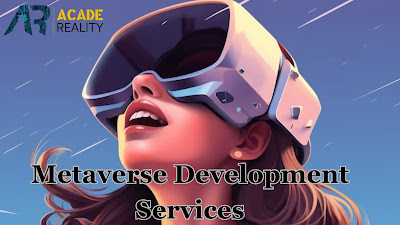Inside the Metaverse: Understanding the Technical Foundations of the Virtual Worlds
Technological advancement is required to enrich extended reality experiences and improve different aspects of the digital world. The metaverse game development services are a place of rapid digital advancement.
Only a decade ago, our virtual communication potential was restricted to text messages and phone calls; now, with the Metaverse, we're releasing possibilities on totally another tangent.
Giant technologies have simulated the core notion of the Metaverse and presented a more developed 3D environment, which may offer individuals an immersive virtual experience. Metaverse is currently constructing a new age of the internet, urging the public to take advantage of the next iteration of the internet.
The Metaverse is now thriving, with more individuals becoming aware of its applicability, yet many continue to struggle to grasp how the metaverse game development came to be.
Thus, let's talk about all of the tools that are driving the establishment of prospective metaverse initiatives and fueling the Metaverse.

Metaverse Development Company
What Is Metaverse Technology?
Metaverse development company is mainly a post-reality cosmos that merges digital virtual worlds and physical reality in a multiuser environment that is enduring and continuous.
The Metaverse is based on the combination of virtual reality (VR) and augmented reality (AR) technology, allowing for multimodal interactions with people, digital settings, and virtual products. As a result, the Metaverse is an interactive web of sociable and immersive multi user permanent platforms.
Also, NFTs (non-fungible tokens) and cryptocurrencies are conceivable as a result of blockchain technology, which allows the ownership of real estate and virtual objects in metaverses for example, Decentraland.
Microsoft and Meta are only two of the companies working on technologies for interacting with digital environments. Many other key firms are building the structure required to develop more realistic and better virtual worlds.
7 Layers of Metaverse Technology
According to the entrepreneur, game developer, and author Jon Radoff, the Metaverse game development is divided into seven distinct levels, each of which affects one element of the consumer experience. Let's examine each of them distinctly:
Experience: Well, the Metaverse development company will offer us a wealth of 2D (two-dimensional) and 3D (three-dimensional) visual experiences that we cannot now enjoy.
Discovery: The Metaverse ecology still has outboard and inbound discovery methods. When people actively seek information, this is mentioned as inbound discovery. Outbound marketing, on the other hand, refers to bringing communications to people irrespective of whether they request it or not.
Creator Economy: Former versions of the internet required some programming ability to build and create tools. However, web application outlines have made it easy to produce web apps without coding. As a result, the number of web creators is quickly growing.
Spatial Computing: It is a technology that blends augmented reality with virtual reality. Microsoft's HoloLens is a great design demonstrating what this technology is proficient in. Even if you haven't acquired your hands on a Hololens yet, you must consider Instagram's face filters as an example of spatial computing.
Decentralization: Designers may take advantage of virtual capabilities by leveraging a scalable ecosystem of distributed computing powered by microservices. Also, smart contracts and blockchains provide producers access to their goods and data.
Human Interface: By simply looking around at the virtual world, consumers may obtain information to create shared experiences, access maps, and learn about their surroundings utilizing a combination of spatial computing and human interface.
Infrastructure: The presence of other layers is reliant on technological structure. It involves 6G and 5G computing in order to minimize network congestion and boost network capacity.
Wrapping up
It's easy to ignore a revolutionary notion or get caught up in a dispute about the practicality of something because it's worth to the world isn't immediately quantified or visible.
But we must remember that we have been exchanging experiences and tales with one another since the beginning of time, not because it is valuable (though it sometimes is), but because it is an important part of being human.
And we've always been able to use advanced technology to have more fun, create better experiences, and tell greater stories. We now have a new digital playground to enjoy, and there will soon be a world of infinite possibilities.
AcadeReality is a professional metaverse development company offering AR/VR solutions, 2D/3D animation, Metaverse, gaming, VFX, and other solutions.



Comments
Post a Comment